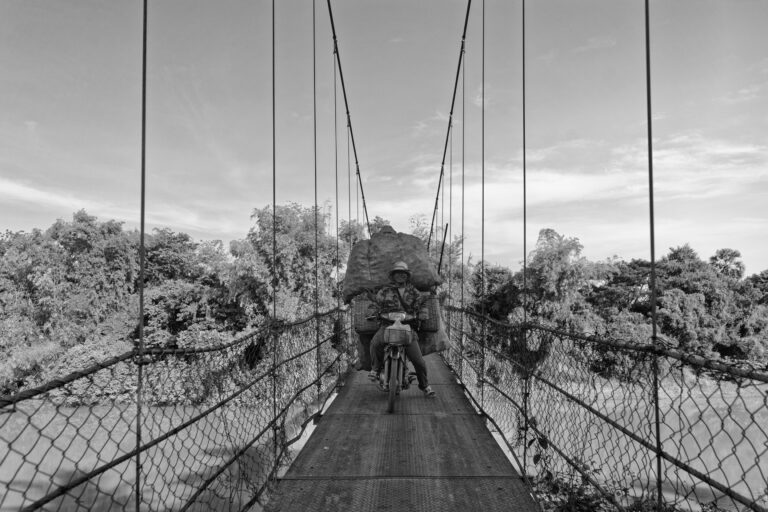
Obviously, there is no single definition of a good photo. There are several elements put together, mixed and matched. Rules are adhered to and broken. When shooting personal photography, I’m a firm believer in shooting what and how you like. But being aware of how your work is seen or can be seen is still important.
Seeing Perspectives
Perspectives will differ as styles and preferences also will differ. To highlight this concept of varying perspectives, here is one very simple activity I like to use to start off a beginner photography workshop. This is something you can do looking at your own photos at home or with a friend. Give it a shot, it’s interesting to see varying perspectives.
Before the workshop, I contact the participants and ask them to bring 1 or 2 photos (digital or print) with them on the day of the workshop. Ideally, the photos are ones that they took, but it’s fine to share photos that aren’t their own. They should chose photos that they like and be prepared to briefly explain why they like them.
At the workshop, we share our photos in small groups. Sitting in a circle, we pass the photos around, along with a piece of paper for each photo, and quickly write our thoughts, emotions, ideas, and/or questions that arise from looking at the individual photos. These are the viewers perspectives and responses to the photo.
Next, once the photos have all made their way around the circle, the owner of the photograph then has the opportunity, if they chose, to explain their perspective of the photo. What are their thoughts, emotions, ideas and/or questions that come from the photo?
Reasons range from colors, patterns, subjects, lighting and beyond – there are a wide range of reasons or combination of reasons. Sometimes, fairly often actually, the reason is based on a personal connection to the moment. While we don’t always have a deep personal connection to a photo, we often have at least a small connection to it. After all, we did feel compelled to take the photo in the first place. Of course, type of photography can effect our viewers’ perspective of a photo. A street portrait will likely create a different response compared to an architecture photo.
Now, whether or not the photographer accepts the feedback and responses, is up to them. Some feedback isn’t helpful. Regardless, it can be beneficial to understand just how differently we experience a photo, especially when the photo isn’t ours and we don’t have a connection to the moment.
You don’t take a photograph, you make it. – Ansel Adams
Looking For Impact
One of the keys for making my favorite photos is realizing that photography is like an illusion. We experience the world in 3D, but a photographer must get the viewer to experience or see something in 2D. Ansel Adams accurately said, “You don’t take a photo, you make a photo.”
We have all taken a photo based on seeing an amazing landscape or while in a joyful moment with family or a friend. Then, when we look at the photo later or show it to a friend, we are underwhelmed or our friend’s response might be less than enthusiastic. Some of this is based on trying to capture the 3D world or capture a photo in which the attraction is based on emotions and atmosphere. So we must find a way to create an illusion for our 2D photo.
We must find a way to make the viewer experience our illusion. There are many ways to do this (composition, light, space, subject, and the list goes on), but the underlying factor I look for in a photo is impact.
Impact can come in several forms. The decision to use or ignore, elements, techniques, and rules of photography will effect the impact of your photography. Using these methods, one of my favorite impacts to leave on a viewer is one of curiosity. Thus, leaving the viewer with questions and desire to discover and understand more.
This is an impact that supports action, rather than passive observation. Action can be smaller scale, such as reading a title and description of a photo, or slightly larger, like researching more about the subject or location of a photo. It can even go further, such as inspiring activism and change. Regardless, by inspiring curiosity we have a chance to create impact.
You don’t make a photograph just with a camera. You bring to the act of photography all the pictures you have seen, the books you have read, the music you have heard, the people you have loved.
– Ansel Adams
What Is A Photo Worth?
As the saying goes, “A picture is worth a thousand words.” But which words? Whose words? What is the perspective?
For better or worse, once art is presented to the public it no longer solely belongs to the artist and the interpretation of the art will inevitably vary.
Photography is no different. Interpretations of a photo will often differ from viewer to viewer. The photographer can do his or her best to express a desired intent, but it does not guarantee anything. The viewer may not see, experience and/or understand the photographer’s original intent.
Being aware of this is important as photography does have the power to build, change, or reinforce opinions and perspectives. While it is far from my place to tell anyone what to take photos of or how they do so, I do think all photographers have a responsibility to at least be aware of the influence of their work.
Ask and listen to yourself. What is your intent?
For example, when we are traveling we sometimes witness people in less fortunate living conditions. Let’s say you decide to take a shot of the environment and the people, what is your reason? Perhaps your intent is to simply show your artistic ability on social media by capturing others’ misfortune, then maybe reconsider taking the shot. If your hope is to raise awareness and document for a cause, then perhaps carry on. I’m not here to judge. Just remember that people will often see and translate your photo with their own 1000 words.
In the end, shoot what you enjoy and believe in. Learn the elements of photography, but shoot how you want. Be aware of your intent and how your photo might be perceived.
And if it were up to me, if your shot leaves an impact of curiosity – an impact to learn, communicate, listen, and grow – then you have certainly made a good photo.
But that’s just me.
What is the impact you would like your work to have on people? Fire away in the comment section below.
Also, if you enjoyed the information here, consider enrolling below for future posts.


Really good essay, Ted.
Here’s the topic for another one: how do you develop a photographer’s eye?